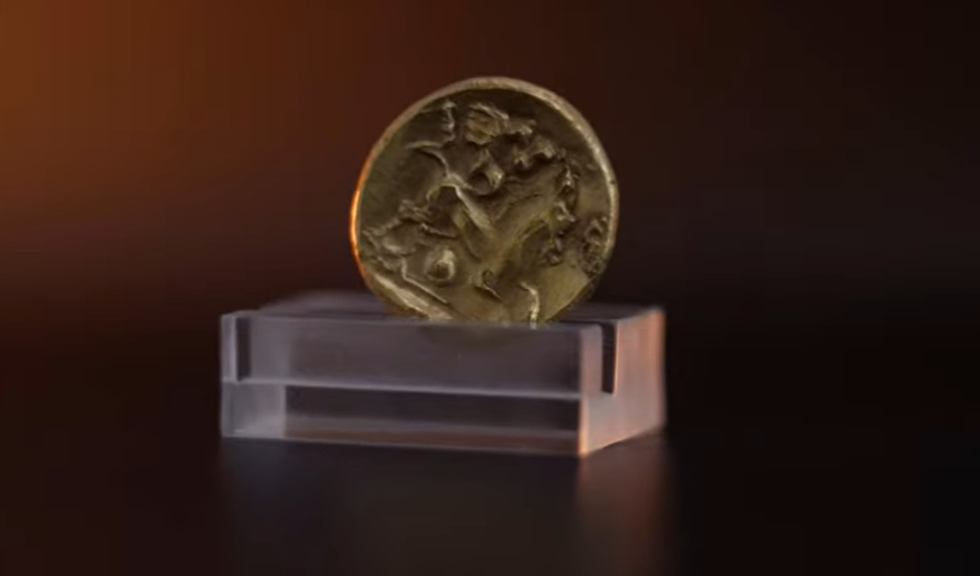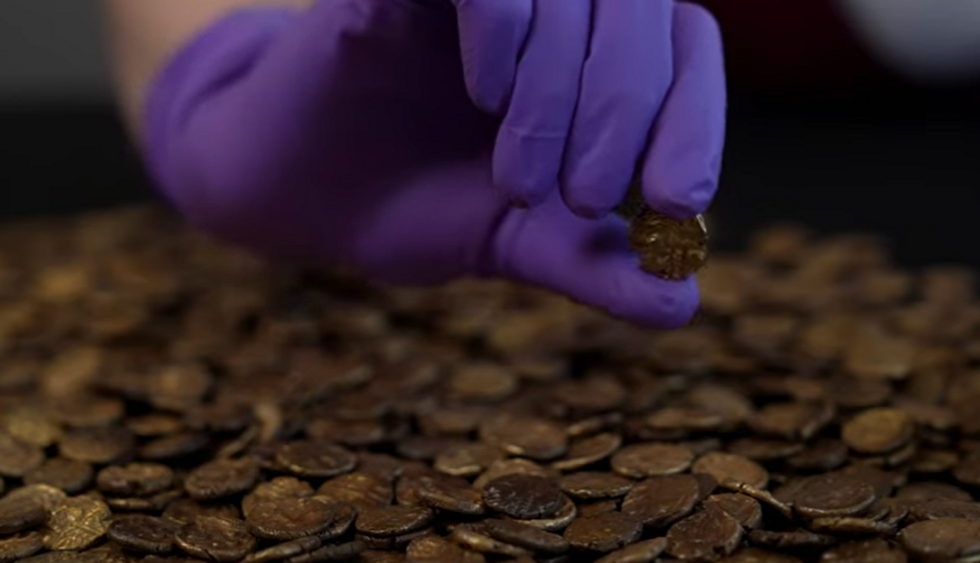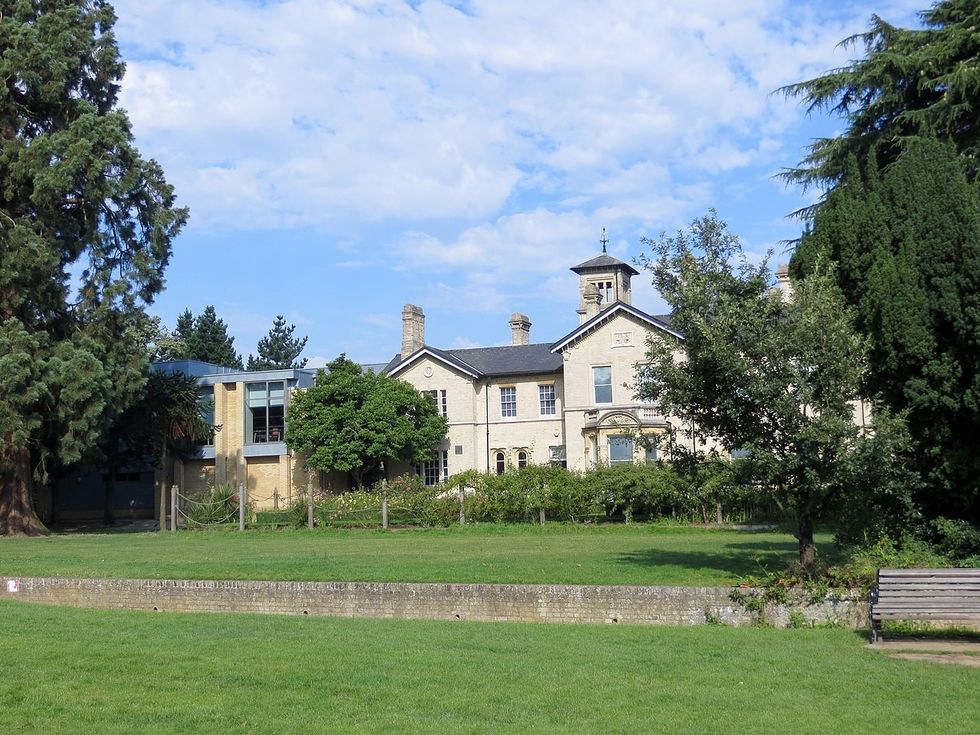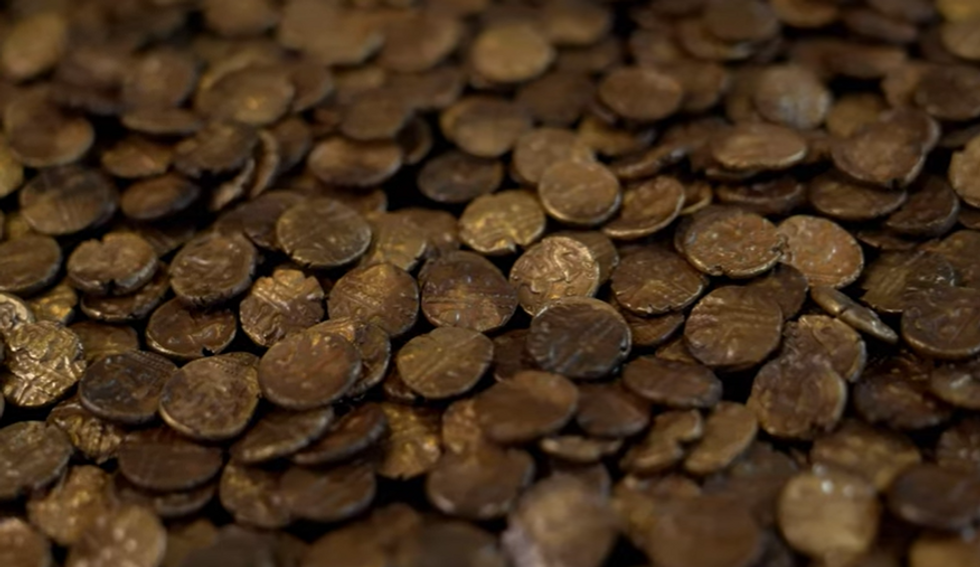Archaeology breakthrough as Britain's largest Iron Age gold coin hoard linked to Julius Caesar to be displayed in museum
A metal detectorist found the collection on private land without permission and initially failed to declare the find in 2021
Don't Miss
Most Read
Latest
Britain's largest recorded Iron Age gold coin hoard is set to go on permanent display at the Museum of Chelmsford in summer 2026, close to where it was discovered.
The Great Baddow Hoard, comprising 933 gold coins found in 2020, has been described by experts as a "nationally significant" and "one-of-a-kind" discovery.
The collection, which remained buried for more than 2,000 years, was declared treasure by a coroner after its discovery.
Essex finds liaison officer Lori Rogerson called it "a nationally significant discovery" that will leave museum visitors "in awe at its size and gold content".

The collection, which remained buried for more than 2,000 years, was declared treasure by a coroner after its discovery
Museum of Chelmsford

The Great Baddow Hoard, comprising 933 gold coins found in 2020, has been described by experts as 'nationally significant'
Museum of Chelmsford
The hoard comes from a period when Iron Age tribes first began minting their own coins using regional dies, and was found with fragments of a possible container.
Museum curator Claire Willetts suggested the coins "could have been intended as a tribute payment to Roman general Julius Caesar".
Significantly, the discovery provides the first archaeological evidence of aggression between the neighbouring Trinovantes and Catuvellauni tribes.
"The hoard's discovery in what is traditionally considered Trinovantian territory at Great Baddow may indicate movement or influence from western tribal groups into the east, potentially aligning with accounts of upheaval during Caesar's second invasion of Britain in 54 BC," Willetts explained.
MORE ARCHAEOLOGY BREAKTHROUGHS:

The Museum of Chelmsford acquired the treasure after receiving a £250,000 grant from the National Lottery Heritage Fund
Wikimedia Commons
Previously, evidence of this tribal conflict existed only in Roman sources.
The Museum of Chelmsford acquired the treasure after receiving a £250,000 grant from the National Lottery Heritage Fund.
Additional contributions came from several organisations including Chelmsford City Council, Friends of Chelmsford Museums, Essex Society for Archaeology and History, and Essex Heritage Trust.
The Council for British Archaeology East and Essex Numismatics Society also provided funds for the acquisition.
Liz Bates, director of England, Midlands & East at the National Lottery Heritage Fund, said it was pleased to support the acquisition of "this one-of-a-kind Iron Age hoard".
Following its initial exhibition in summer 2026, the hoard will go on permanent display at the museum from spring 2027.

The hoard's discovery was marred by controversy
Museum of Chelmsford
The hoard's discovery was marred by controversy. A metal detectorist found the collection on private land without permission and initially failed to declare the find.
Shane Wood later admitted the theft of 22 Staters and one quarter Stater at Chelmsford Magistrates' Court in April 2021.
He was fined and had his metal detector destroyed. The British Museum's Treasure Valuation Committee recommended he receive no reward.
Jennie Lardge, Chelmsford City Council's cabinet deputy for cultural services, said: "I hope many of our residents, especially those in Great Baddow, will feel as I do, an immense pride in this outstanding piece of Britain's history uncovered here in Chelmsford."






































